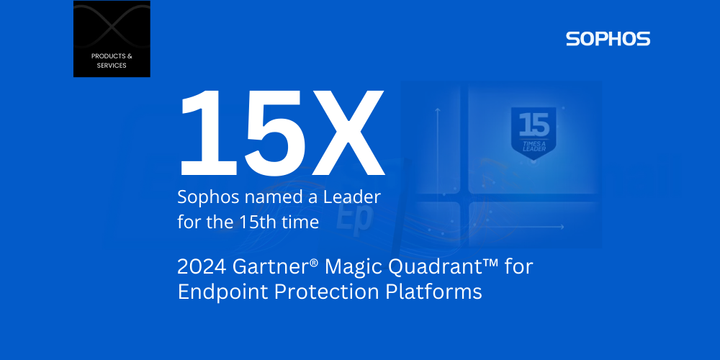Stay Safe Online: 10 Ways to Defend Against Phishing Attacks

Phishing attacks are everywhere nowadays. Phishing attacks have become more sophisticated and targeted, making them more difficult to detect. Phishing attacks are a significant threat for individuals and organizations and will continue to be a major concern for individuals and organizations. Attackers are using a variety of tactics such as social engineering, mobile devices, and AI-based technologies to carry out phishing attacks.
Since Phishing attacks are the potential threat to organizations and individuals. Organizations and individuals need to be aware of these attacks and take proactive measures to protect themselves. But, before that let's first understand what actually is Phishing attack.
What is Phishing Attack?
Phishing attack is a type of cyber attack that uses social engineering tactics to trick individuals into divulging sensitive information, such as login credentials, credit card numbers, or other personal information. The attackers often pose as a reputable organization or individual, such as a bank, a government agency, or a social media platform, in order to gain the trust of the target. The information obtained is then used for fraudulent or malicious purposes, such as identity theft or unauthorized access to an individual's online accounts.
Phishing attacks are typically carried out through email, but can also occur through phone calls, text messages, and social media messages. The attackers can use varieties of techniques as such social engineering, mobile devices, and AI-based technologies to carry out phishing attacks.
One of the most common tactics used in phishing attacks is spear-phishing, which is a targeted form of phishing that uses personal information to make the attack appear more legitimate. This can make it more difficult for individuals and organizations to detect phishing attacks.
Another trend is the use of mobile devices in phishing attacks. As more individuals use their mobile devices for online activities, attackers are shifting their focus to mobile devices and using SMS and social media messages to carry out phishing attacks.
Additionally, attackers can use Artificial Intelligence (AI) and machine learning in phishing attacks. Attackers are likely to use these technologies to create more sophisticated and targeted phishing attacks, such as using AI-generated emails that are more difficult to detect.
Why organization Should be Aware Against Phishing Attacks
Organizations should be aware and need to protect themselves against phishing attacks because they can result in significant financial and reputational harm.
Phishing attacks are designed to trick individuals or employees into divulging sensitive information. Once an attacker has this information, they can use it for fraudulent or malicious purposes, such as identity theft or unauthorized access to an organization's online accounts. This can result in financial loss for the organization, as the attacker may use the information to steal money from the organization's bank account or make unauthorized purchases using the organization's credit card information.
Furthermore, a successful phishing attack can also damage an organization's reputation. If an attacker is able to gain access to sensitive information, such as customer data, it can lead to a loss of trust among the organization's customers and clients. This can lead to a decrease in business and damage to the organization's reputation.
Here are some ways to protect yourself and your organizations from phishing attacks:
- Be cautious of unsolicited emails: Be wary of emails from unknown senders, especially those that ask for personal information or direct you to click on a link. If you receive an email from an unknown sender that seems suspicious, do not open it.
- Look for red flags: Look for grammar mistakes, spelling errors, and suspicious email addresses, these are common indicators of phishing emails. If an email appears to be from a reputable organization, but has spelling errors or poor grammar, it is likely a phishing email.
- Use anti-phishing software: Install anti-phishing software on your computer and mobile device to detect and block phishing emails. This software can help identify and block phishing emails before they reach your inbox.
- Keep your software updated: Keep your operating system, browser, and anti-virus software up to date to protect against the latest phishing threats. Software updates often include security patches that can help protect against new phishing attacks.
- Be vigilant with email attachments and links: Be wary of clicking on links or opening attachments in emails, especially if they are from unknown senders. Instead, hover over the link to see the URL it leads to, if the link looks suspicious, avoid clicking on it.
- Educate yourself about phishing: Learn about the different types of phishing attacks and how to recognize them. Be familiar with the tactics that attackers use to trick individuals into divulging sensitive information.
- Use two-factor authentication: Two-factor authentication (2FA) adds an extra layer of security to your email account by requiring a second form of authentication, such as a code sent to your phone, in addition to your password. This makes it much more difficult for attackers to gain unauthorized access to your account.
- Use a password manager: A password manager can help you create strong, unique passwords for all of your online accounts, including your email account. This can prevent attackers from using common passwords to gain unauthorized access to your account.
- Be cautious when using public Wi-Fi: Public Wi-Fi networks are often unsecured, which makes it easy for attackers to intercept your data. Be cautious when using public Wi-Fi and avoid accessing sensitive information, such as your email account, on these networks.
- Regularly review your email account: Regularly review your email account for suspicious activity. If you notice any suspicious emails or login attempts, change your password immediately and contact the organization or individual that the email appears to be from.
By following these tips, you can help protect your email account from phishing attacks. Remember that phishers are getting more sophisticated in their methods and it's important to be vigilant and keep yourself informed about the latest phishing tactics. Implementing security measures such as anti-phishing software, employee education and training, and two-factor authentication can help protect organizations from these types of attacks.
It's always better to be safe than sorry.




Comments ()